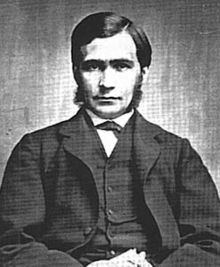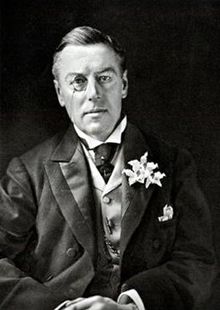It is usually assumed that footnotes are useful ‘for the reader to refer back to the original source for reference, if he/she wants to know more’. Many historians don’t pay much attention to them and do not really reflect on why they are important, taking them for granted that they are needed. But what can be learnt from footnotes? This post is about them.
A footnote may be seen at the bottom of a page, at the end of a chapter or of a book. It is a small note (usually a figure) that indicate the date, author, title of the document or archive and pagination. There are some of them in this post. They are an incontrovertible device in humanities. But there are actually three ways of quoting a source with a footnote:
 - Sometimes, a footnote is just not necessary. This is when you paraphrase or indicate things that is considered general knowledge: for instance, if you write in a paper that ‘Paris is in France and harbours about 3 million people’, you do not obviously need to refer to any work to warrant your assertion. Either because it is general knowledge, because you got it from Wikipedia (authentic) but cannot really admit it, or because it has been said so many times and in so many places that people will easily find where it has been written. The last thing is that, generally speaking, it is almost impossible to locate the original source of the information (who was the first to say Paris was the capital of France really?). So, many times, a footnote will not be necessary.
- Sometimes, a footnote is just not necessary. This is when you paraphrase or indicate things that is considered general knowledge: for instance, if you write in a paper that ‘Paris is in France and harbours about 3 million people’, you do not obviously need to refer to any work to warrant your assertion. Either because it is general knowledge, because you got it from Wikipedia (authentic) but cannot really admit it, or because it has been said so many times and in so many places that people will easily find where it has been written. The last thing is that, generally speaking, it is almost impossible to locate the original source of the information (who was the first to say Paris was the capital of France really?). So, many times, a footnote will not be necessary.
- In a second case, footnotes are necessary to show that you know where you got your evidence, that it is a reliable (published and public) source and that you know precisely the literature, that you did not make up an information, a date or a figure. For instance, if I write that ‘In 1932, the International African Institute awarded 13 scholarships for conducting field work abroad; all of them went to students of Malinowski at the London School of Economics’, it will be necessary to indicate that I found it in Mills, 2008, p. 34, just to prove that it was not made up.[1] In that case, the footnote is a proof that you base yourself on previously available research or facts, and people will only want to refer back to the original work because they will want to check the pagination. Otherwise, it is useless as such.
- However, a third (and much more interesting) case is when you refer to a primary document. This may  be a speech, a conference, a novel, a book, an administrative record, a correspondence, etc. In that case your quotation will have a value in itself because you will quote something that cannot be changed, rephrased or invented: these were precise words emanating from someone or something (such as an institution) that proves a point by itself. For instance, if I say that Marcel Mauss, the French anthropologist, wrote in 1913 that it was a ‘Chose humiliante, nous avons même vu que pour Madagascar, pour les Nouvelles-Hébrides, c’est dans les ouvrages anglais qu’il faut aller chercher les meilleurs renseignements.’[2] In that case, referring to the original work may be much more useful and enticing than in the second case because there might be much more in the original work than what you quoted to suit your argument. Your quote is inspiring, so researchers might want to know where you got your source to re-use it.
be a speech, a conference, a novel, a book, an administrative record, a correspondence, etc. In that case your quotation will have a value in itself because you will quote something that cannot be changed, rephrased or invented: these were precise words emanating from someone or something (such as an institution) that proves a point by itself. For instance, if I say that Marcel Mauss, the French anthropologist, wrote in 1913 that it was a ‘Chose humiliante, nous avons même vu que pour Madagascar, pour les Nouvelles-Hébrides, c’est dans les ouvrages anglais qu’il faut aller chercher les meilleurs renseignements.’[2] In that case, referring to the original work may be much more useful and enticing than in the second case because there might be much more in the original work than what you quoted to suit your argument. Your quote is inspiring, so researchers might want to know where you got your source to re-use it.
In that specific case, sources are complex things. They have an inherently ‘ineffable’ dimension, meaning that you don’t get everything from it just by using it. Other researchers with another thesis or in another context might re-use the quotation by Mauss, either because they are working on Madagascar, on the Franco-British imperial competition or on a biography of the French academic.
So, with few exceptions, you might want to keep this advice in mind: Quote primary sources, rephrase secondary sources. Because secondary sources are mostly crap (90% of what is published or written academically we could do without, either because they are just syntheses of information already available elsewhere or because it does not offer much ‘hard’ stuff – or food for thought – to rely on).
 So many sources, indeed, are useless for research because they are not ‘hard’ or ‘concentrated’ enough. Take a series of articles by T. H. Green, the English philosopher who popularised Idealism in Britain in the 1880s, entitled ‘Can there be a Natural Science of Man?’ and published in the journal of psychology and philosophy Mind in 1882 (25, 26, 27). All in all, the articles represent about a 100 pages – yet there is very little actually useful to understand the issue at stake. At no time did Green manage to concentrate or get the gist of his thought in a formula or a short, elegant paragraph that would have saved him (and me) a lot of time and trouble.[3]
So many sources, indeed, are useless for research because they are not ‘hard’ or ‘concentrated’ enough. Take a series of articles by T. H. Green, the English philosopher who popularised Idealism in Britain in the 1880s, entitled ‘Can there be a Natural Science of Man?’ and published in the journal of psychology and philosophy Mind in 1882 (25, 26, 27). All in all, the articles represent about a 100 pages – yet there is very little actually useful to understand the issue at stake. At no time did Green manage to concentrate or get the gist of his thought in a formula or a short, elegant paragraph that would have saved him (and me) a lot of time and trouble.[3]
Now, compare this with a quote by Ernest Barker, the Cambridge politist, who wrote to Alexander Farquharson, then heading the Institute of Sociology in England, in 1933 and that I found in the archives in Keele. About sociology he said,
 ‘I don’t see how any “science” of social life can be other than an attempt to analyse and understand. To go beyond analysis & understanding, into the region of ‘art’ and advice – truly it is what generous spirits will always want; but, alas, they will never be listened to by those who are “doing” things; and if they were, any scientific or “artistic” control of social life is a thing which, on the whole, I don’t want. I like the multitudinous diversity of private and voluntary endeavour.’[4]
‘I don’t see how any “science” of social life can be other than an attempt to analyse and understand. To go beyond analysis & understanding, into the region of ‘art’ and advice – truly it is what generous spirits will always want; but, alas, they will never be listened to by those who are “doing” things; and if they were, any scientific or “artistic” control of social life is a thing which, on the whole, I don’t want. I like the multitudinous diversity of private and voluntary endeavour.’[4]
Well, this short quote has so much more to give than Green’s 100 pages about the same topic. In a few sentences appears clearly Idealism defined and explain Oxbridge mistrust at sociology in the interwar years. In one case, the source is ‘soft’ or flabby, in the other it is ‘hard’ or dense. It concentrates a lot of things and so much more may be said about Barker’s quote than about Green.
Which leads me to my point: a source is complex in the sense that it cannot be rephrased or easily explained lest it would lose its power or sense. You can only want to quote such a phrase, not rephrase it. And you will never stop commenting on them because you cannot dry the well of a good source, in a way.
 Put it in other words: What is a source, then? A source is originally a place where water springs and spurt out. Replace water with ideas: In our case, when a source is found, ideas springs (to mind) too. The skill of the historian is thus to find, in the myriad of texts, documents, archives, etc. available the precise piece that will present something that irrigates so many of the following writers – something that irrigates many works which may be traced back to the source – and to fit in his argument. A source is an essence, it is a concentrate, that pervades many works and founded a tradition: Green’s Idealism, initially developed in his Prolegomena to Ethics (published posthumously in 1883), founded a tradition and his arguments irrigated or diluted themselves in so many subsequent works in England and abroad. It is only by reconnecting to the original source that you may most easily understand it in its essence.
Put it in other words: What is a source, then? A source is originally a place where water springs and spurt out. Replace water with ideas: In our case, when a source is found, ideas springs (to mind) too. The skill of the historian is thus to find, in the myriad of texts, documents, archives, etc. available the precise piece that will present something that irrigates so many of the following writers – something that irrigates many works which may be traced back to the source – and to fit in his argument. A source is an essence, it is a concentrate, that pervades many works and founded a tradition: Green’s Idealism, initially developed in his Prolegomena to Ethics (published posthumously in 1883), founded a tradition and his arguments irrigated or diluted themselves in so many subsequent works in England and abroad. It is only by reconnecting to the original source that you may most easily understand it in its essence.
Water, just like thought in history, runs in underground currents. At some point, under the pen of a few writers, this water squirts. To carry on the metaphor, as is said, you have to ‘dig out’ your sources in history. This means that 90% of the useless works are like earth (or sediments) that covered the source in time. Once you dug out the source, you found something hard like a stone which cannot be rephrased (or removed, or displaced, without losing its inherent value or meaning). Then you can build a work on these stones; and only then will it be said to be grounded on facts. In history, facts are stones. And this source that you found – this speech, this phrase, this text – has inspired people, fuelling the fire of passions and debates in history.
Dig out the stones to have water spring that will inspire others and fuel debates: earth, water, air and fire. All these elements should be found in a good source and thus define one.
Out of the thousand sources on colonisation, I dug out this one speech (from the earth) by Joseph Chamberlain delivered in 1897 which irrigated (water) so many of the subsequent conceptions of the Pax Britannica and the British Empire and conceptually defined them much ‘better’ and more clearly than so many later writers. Picture how his speech may have been inspiring (air) for his contemporaries; feel how his speech may indeed have fuelled passions and debates in history (fire):

‘You cannot have omelettes without breaking eggs; you cannot destroy the practices of barbarism, of slavery, of superstition, which for centuries have desolated the interior of Africa, without the use of force; but if you will fairly contrast the gain to humanity with the price which we are bound to pay for it, I think you may well rejoice in the result of such expeditions [in West and East Africa] […] which may have, and indeed have, cost valuable lives, but as to which we may rest assured that for one life lost a hundred will be gained, and the cause of civilization and the prosperity of the people will in the long run be eminently advanced.’[5]
 In that context, the art of the historian precisely lies in finding the right stones to build a nice, elegant work of the mind. A good source is always raw material. The historian is like the stone-mason of the mind: he has to find the best stones in the sediments of time, carve them to fit in in his argument elegantly and thus craft a beautiful work of (intellectual) art – a good article, a useful book or an illuminating argument. Writing history is like doing the archaeologist of the mind.
In that context, the art of the historian precisely lies in finding the right stones to build a nice, elegant work of the mind. A good source is always raw material. The historian is like the stone-mason of the mind: he has to find the best stones in the sediments of time, carve them to fit in in his argument elegantly and thus craft a beautiful work of (intellectual) art – a good article, a useful book or an illuminating argument. Writing history is like doing the archaeologist of the mind.
Mastering the art of the footnotes is thus not so trivial as it seems and good ones should be inspiring; thus revealing your craft in researching and writing.
[1] David Mills, Difficult Folk?: A Political History of Social Anthropology (New York: Berghahn Books, 2008), p. 34.
[2] Marcel Mauss, L’ethnographie en France et à l’étranger (Classiques des sciences sociales, 1913), p. 19 <http://www.uqac.ca/zone30/Classiques_des_sciences_sociales/classiques/mauss_marcel/oeuvres_3/oeuvres_3_10/ethnographie_en_france.html> [accessed 23 June 2016].
[3] Of course, this is a light criticism of Green, whose ideas were particularly better spelled out in another, much better-known piece, his Prolegomena to Ethics. I’m just using this example to make a point, nothing’s personal here.
[4] Keele University Archives, VB 302, Ernest Barker to Alexander Farquharson, 27 January 1933.
[5] Quoted from a speech by Joseph Chamberlain, the British Secretary of State for the Colonies between 1895 and 1903, at the annual dinner of the Royal Colonial Institute on 31 March 1897 (available at http://www.urome.be/fr2/ouvrag/1897chamberlain.pdf, checked on 6 August 2016).
